Windows¶
Step 1 - Install the SMARTUNIFIER and the Docker Components:¶
Move the installation package to a suitable location.
Open “Docker Desktop” application.
Run the .exe file to start the setup.
Click on the “Browse” button (1) to change the location of the installation.
Select the “Next” button (2) to continue.
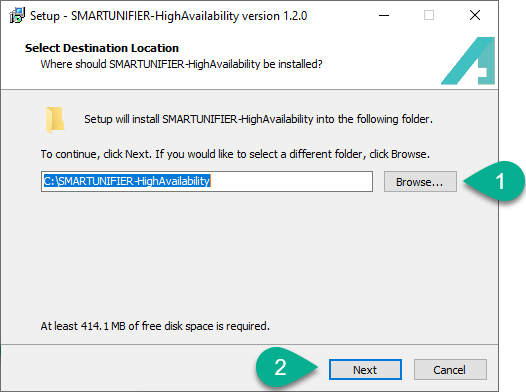
Enter the local IP address (3). Select the “Next” button (4) to continue.
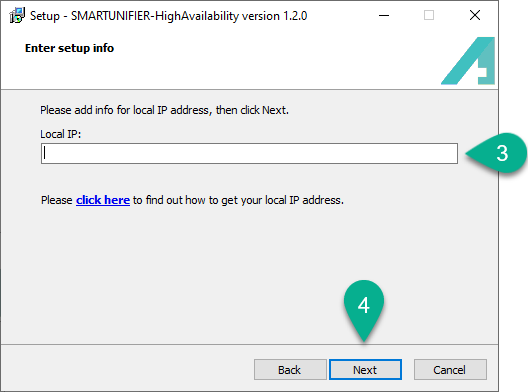
Click on the “Install” button (5) to start the installation.
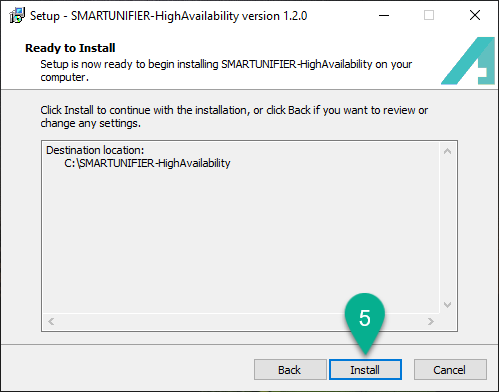
Check the box (6) to create SMARTUNIFIER Service (optional).
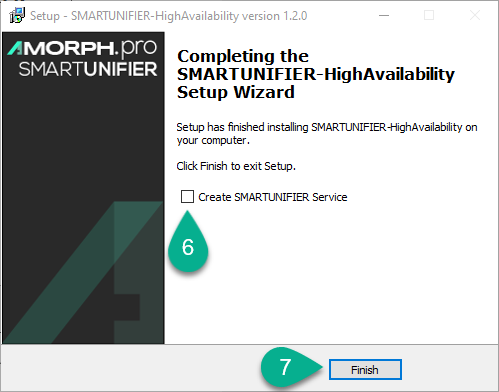
Select the “Finish” button (7) to finallize installing the SMARTUNIFIER. The console will open and the extraction of the Docker components starts.
After the console is closed, the Docker components are installed in a few seconds:
influxdb
grafana
nginx

Deploy Components Manually¶
The SMARTUNIFIER Service can also be created manually. From the SMARTUNIFIER-HighAvailability folder (install_location/SMARTUNIFIER-HighAvailability) run the console (CMD) as administrator and execute:
create_service.bat
If a Docker container is deleted, it can be redeployed. From the scripts folder (install_location/SMARTUNIFIER-HighAvailability/scripts) open the console (CMD) and execute:
to deploy InfluxDb container:
deploy.bat influxdb
to deploy Grafana container:
deploy.bat grafana
to deploy Nginx container:
deploy.bat nginx
to deploy all components:
deploy.bat
Uninstalling a container¶
To remove the SMARTUNIFIER Service, from the SMARTUNIFIER-HighAvailability folder (install_location/SMARTUNIFIER-HighAvailability) run the console (CMD) as administrator and execute:
remove_service.bat
To undeploy a docker container, from the scripts folder (install_location/SMARTUNIFIER-HighAvailability/scripts) open the console(CMD) and execute:
to remove InfluxDb container:
cleanup.bat influxdb
to remove Grafana container:
cleanup.bat grafana
to remove Nginx container:
cleanup.bat nginx
to remove all containers:
cleanup.bat
Note
If the user needs to connect with a different local IP, first undeploy and redeploy the docker containers and in the end input the new local IP.
Uninstalling All¶
Follow the steps below to uninstall all the Demonstrator components (folders, files, Docker components):
Make sure the Demonstrator Instance is NOT running.
Make sure the “Docker Desktop” application IS running.
Make sure the SMARTUNIFIER-HighAvailability folder (install_location/SMARTUNIFIER-HighAvailability) is NOT opened by any application.
There are two options to uninstall the Demonstrator:
Using Windows System settings section:
Go to “Add or remove programs” and uninstall SMARTUNIFIER-HighAvailability application.
Run the unins000.exe file from the “SMARTUNIFIER-HighAvailability” folder.
Select the “Yes” button (1) to confirm.
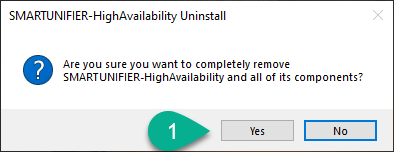
Select the “OK” button (2) to finish.

All the Demonstrator components are removed.
Step 2 - Running the SMARTUNIFIER¶
SMARTUNIFIER can be started as an application or as a service.
Running SMARTUNIFIER as an Application¶
If SMARTUNIFIER was not installed as a service, execute the UnifierManager.bat script located in the installation folder. Afterwards the SMARTUNIFIER Manager Console appears on the screen.
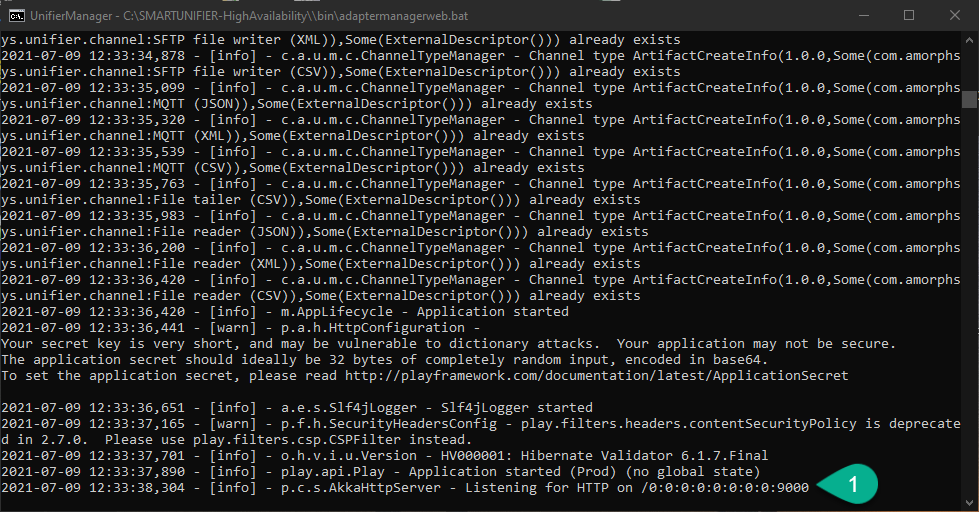
After successfully starting up the SMARTUNIFIER Manager, it can be accessed by opening an Internet Browser (e.g., Chrome or Firefox) and navigating to http://localhost:9000. Use the administrator credentials to login:
Username: admin
Password: admin
Note
The console is for information purposes only. It can be moved to any suitable location on your screen or it can be hidden. Nevertheless, do not close it, because the related processes will also be terminated.
Running SMARTUNIFIER as a Service¶
If SMARTUNIFIER was installed as a service, the service is already running.
To check open “Services” in Windows (press the “Windows” button and type “services”) and search “SMARTUNIFIER” from the list (1).

Open an Internet Browser (e.g., Chrome or Firefox) and navigating to http://localhost:9000. Use the administrator credentials to login:
Username: admin
Password: admin